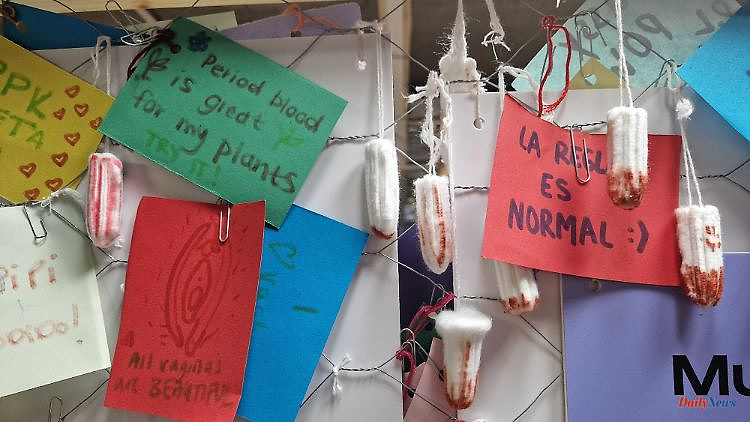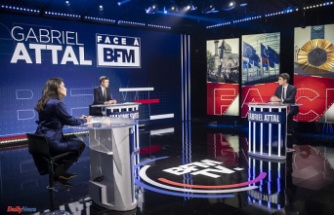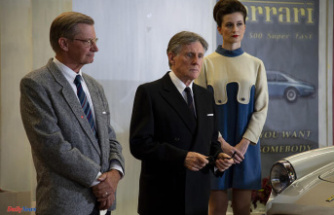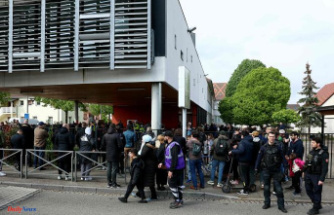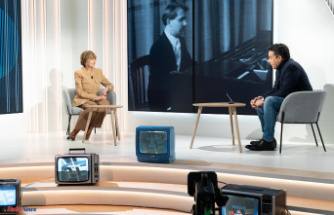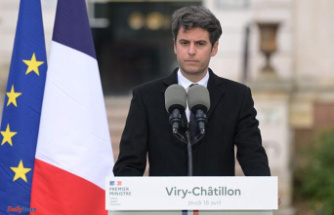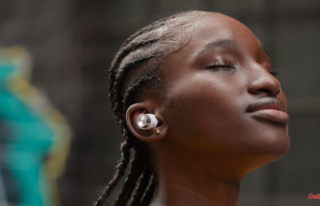London's Vagina Museum, dedicated to female anatomy, needs to find a new home. There is no lack of interest and need, because the gaps in knowledge are considerable.
How different can vulval lips look? Why did people in early Europe reject food cooked by menstruating women? And why can every child draw a penis, but not every adult a vulva? In London, the founders of the Vagina Museum - at times the only museum of its kind in the world - want to make female anatomy, sexuality and history more visible and enlighten about them. But that turns out to be more difficult than expected.
A penis museum in Iceland has been around for decades. In an inconspicuous side street in the east London district of Bethnal Green, what they claim to be the world's first vagina museum found its home until recently. In the middle is an oversized tampon covered with glittering red sequins - almost menstruation as an art object, created by the British artist Sam Dawood.
All around, the exhibition was dedicated to obscure myths of female sexuality. A survey was also discussed there, according to which more than half of the British population could not correctly name the vaginal entrance on a picture of the vulva. Many people think "vagina" means the entirety of the external female sex organs. But this is called "vulva". The vagina, on the other hand, is an internal sex organ.
But the exhibition is over for now: due to precarious tenancies, those responsible had to leave the premises at the beginning of February. There was no lack of interest: on the last two days, the museum was bursting at the seams, time slots had to be allocated in order to do justice to everyone. The German historian Anina Falasca has had similar experiences. The scientist worked at the Hygiene Museum in Dresden to reform the permanent exhibition on sexualities - according to her, the associated educational program is the most popular in the whole house with more than 300 bookings a year.
Nevertheless, she knows that the subject is not always easy to deal with. One could look at the case "figuratively," says the historian after the vagina museum in London was closed for the time being. "Pleasure and empowering-enlightening depictions of sexuality are still underrepresented and are labeled as 'early sexualizing', overwhelming for young people or obscene," says Falasca. They often have to eke out a niche existence in temporary projects or special exhibitions. Sexist depictions, on the other hand, are common.
The journalists Gunda Windmüller and Mithu Sanyal are fighting for the word vulval lips to be in the dictionary one day - as a more suitable variant for labia. "Why do we use the word shame when we describe our genitals?" the two asked themselves a few years ago - driven by the observation that many young women hardly know their own anatomy or are ashamed. They started a petition that has since had more than 43,000 signatures. The word is now appearing in more and more media reports and even in a school book publisher. One day it will also be in the dictionary, says Windmüller. "I'm firmly convinced of that."
In Dresden, sexuality is now firmly established in the museum: there, too, not only anatomy is exhibited, but as much sexual variety and diversity as possible is conveyed. Historian Falasca, who worked on the concept, thinks museums are the perfect place for enlightenment. They generally enjoy a high level of trust and are respected by society. In addition, they are easily accessible and everyone can - unlike in traditional school lessons - devote themselves to the aspects that interest them the most.
The team in London does not want to give up hope. "At Bethnal Green we showed how much the world needs and wants a vagina museum," the website reads. We are proud to have welcomed more than 40,000 visitors. Now the museum wants to fulfill its mission - imparting knowledge, fighting stigmata and being a place for exchange - online as best it can.
Once started as an online exhibition, the foundations have already been laid. At the same time you are looking for a new home: at least 1500 square meters, well connected, no more than 5000 pounds - "because we are non-profit, as affordable as possible".

